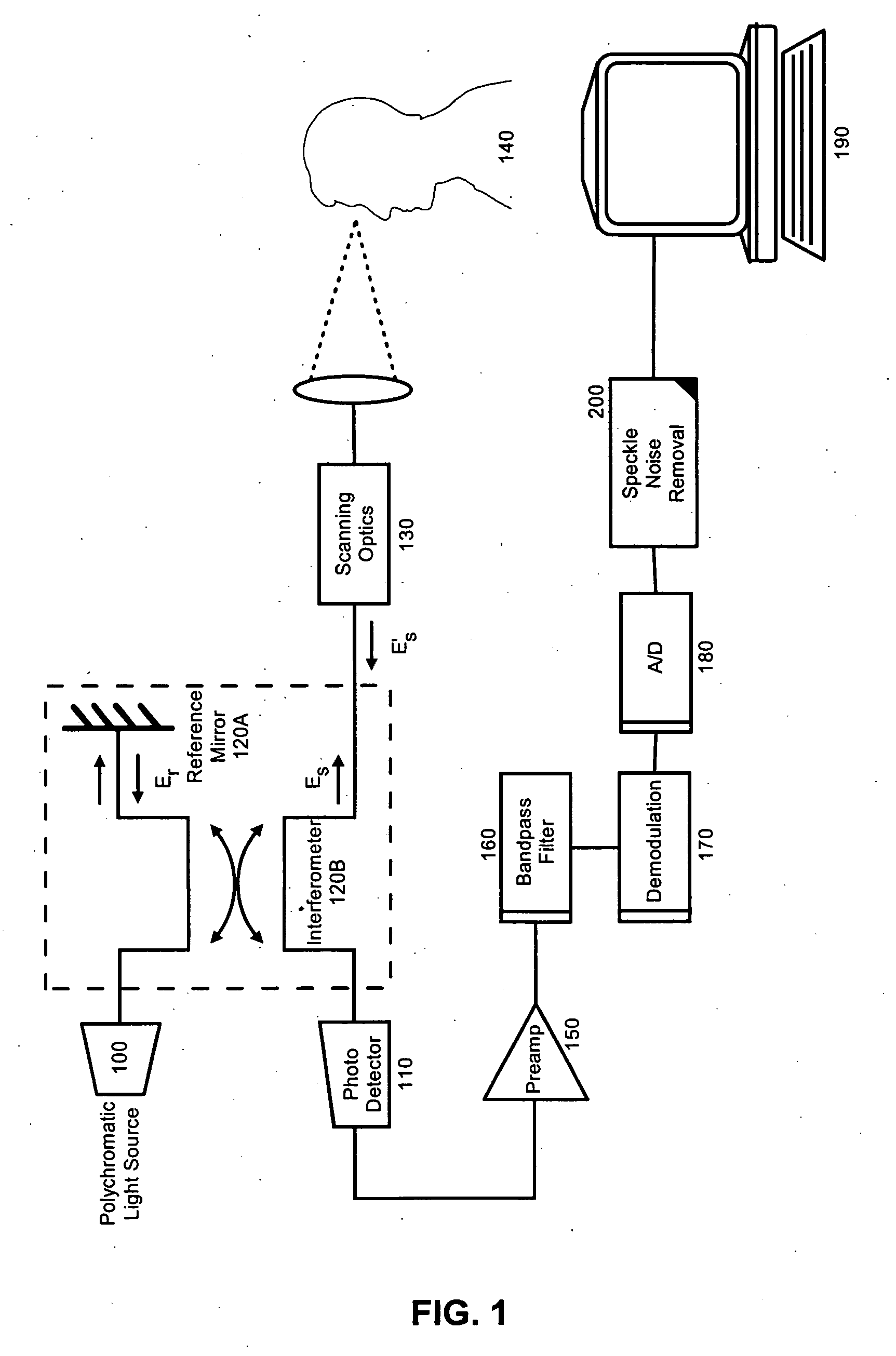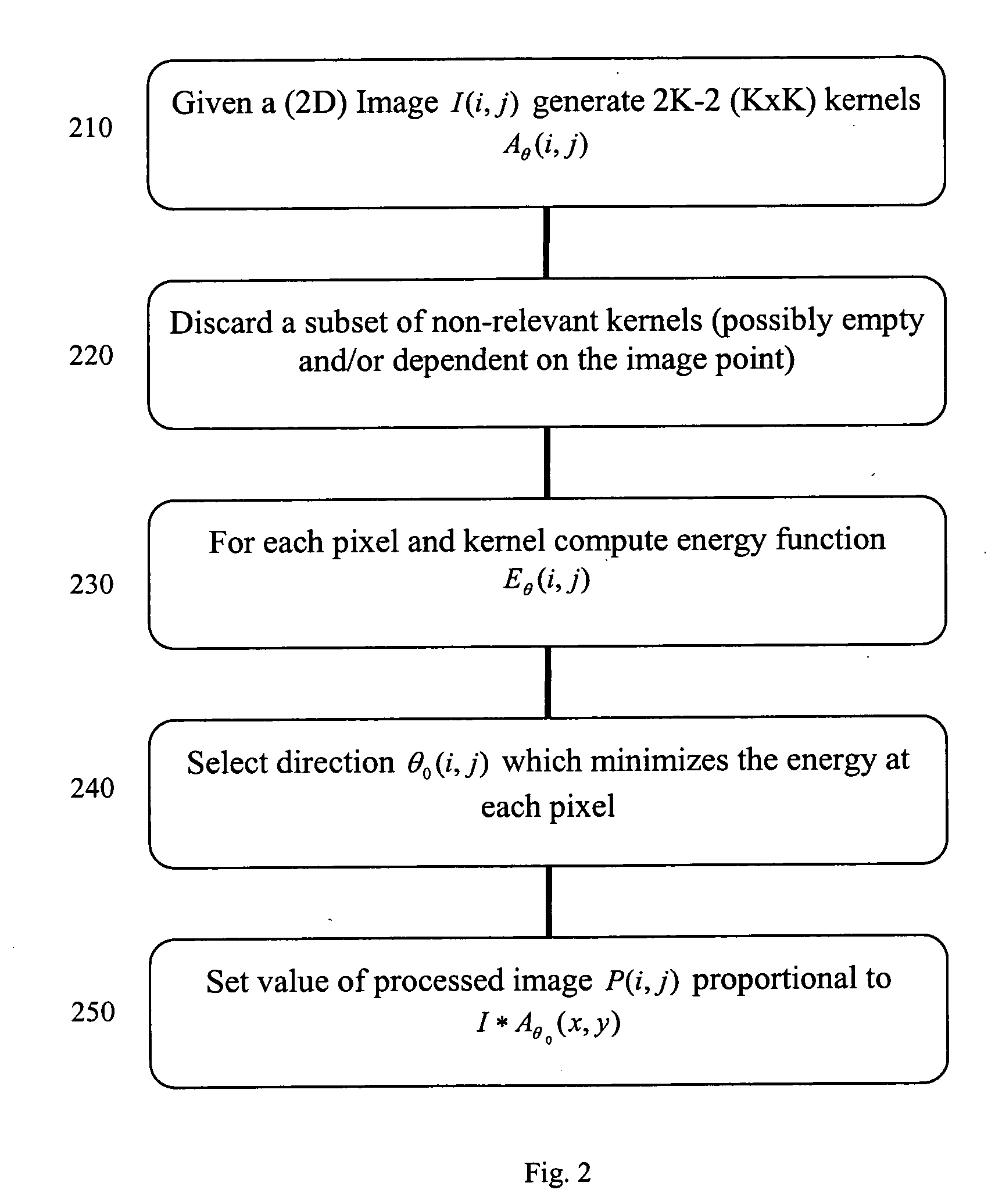Speckle noise removal in optical coherence tomography
a technology of optical coherence tomography and speck noise removal, which is applied in image analysis, medical science, image enhancement, etc., can solve the problems of affecting the affecting the quality of image analysis, so as to achieve the effect of high degree of structural correlation of target features
- Summary
- Abstract
- Description
- Claims
- Application Information
AI Technical Summary
Benefits of technology
Problems solved by technology
Method used
Image
Examples
Embodiment Construction
[0016] The present invention is a system, method and apparatus for speckle noise removal. In accordance with the present invention, two or three-dimensional images can be acquired for processing by a novel adaptive algorithm. Specifically, at each image point an energy function can be computed that quantifies a measure of dispersion of the image values in a particular direction with respect to their mean. Subsequently, a direction θ0(x, y) can be selected which minimizes the energy function at the given pixel (x, y). Finally, a suitable average of the image values in the chosen direction will represent the value of the output image at the point (x, y). The system, apparatus and method of the invention can be particularly effective on images like those obtained using ophthalmic OCT systems which produce sets of cross-sectional images of the human retina.
[0017]FIG. 1 depicts an OCT imaging system configured for speckle noise removal. The system can include a low coherence light sourc...
PUM
 Login to View More
Login to View More Abstract
Description
Claims
Application Information
 Login to View More
Login to View More - R&D
- Intellectual Property
- Life Sciences
- Materials
- Tech Scout
- Unparalleled Data Quality
- Higher Quality Content
- 60% Fewer Hallucinations
Browse by: Latest US Patents, China's latest patents, Technical Efficacy Thesaurus, Application Domain, Technology Topic, Popular Technical Reports.
© 2025 PatSnap. All rights reserved.Legal|Privacy policy|Modern Slavery Act Transparency Statement|Sitemap|About US| Contact US: help@patsnap.com



